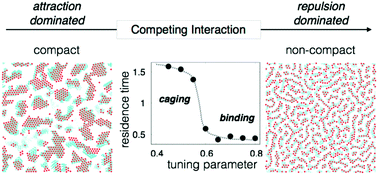Morphology dictated heterogeneous dynamics in two-dimensional aggregates
Abstract
Particulate aggregates occur in a variety of non-equilibrium steady-state morphologies ranging from finite-size compact crystalline structures to non-compact string-like conformations. This diversity is due to the competition between pair-wise short range attraction and long range repulsion between particles. We identify different microscopic mechanisms in action by following the simulated particle trajectories for different morphologies in two dimensions at a fixed density and temperature. In particular, we show that the compact clusters are governed by symmetric caging of particles by their nearest neighbors while sidewise asymmetric binding of particles leads to non-compact aggregates. The measured timescales for these two mechanisms are found to be distinctly different providing phenomenological evidence of a relation between microstructure and dynamics of particulate aggregates. Supporting these findings, the time dependent diffusivity is observed to differ across the morphological hierarchy, while the average long-time dynamics is, in general, sub-diffusive at ‘low’ temperatures. Finally, one generic relation between diffusivity and structural randomness, applicable to simple equilibrium systems, is validated for complex aggregate forming systems through further analysis of the same system at different temperatures.



 Please wait while we load your content...
Please wait while we load your content...